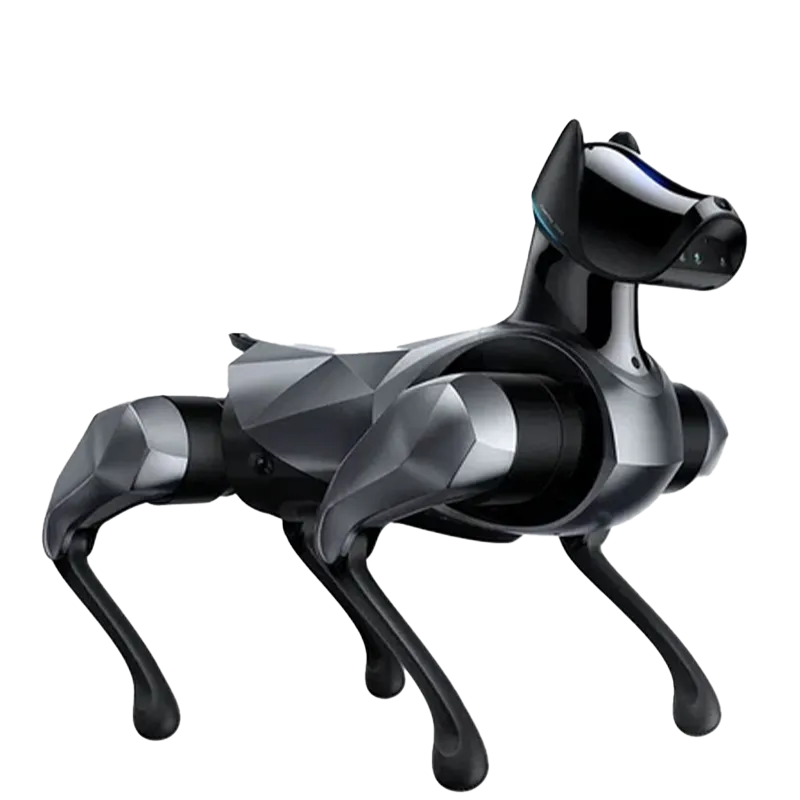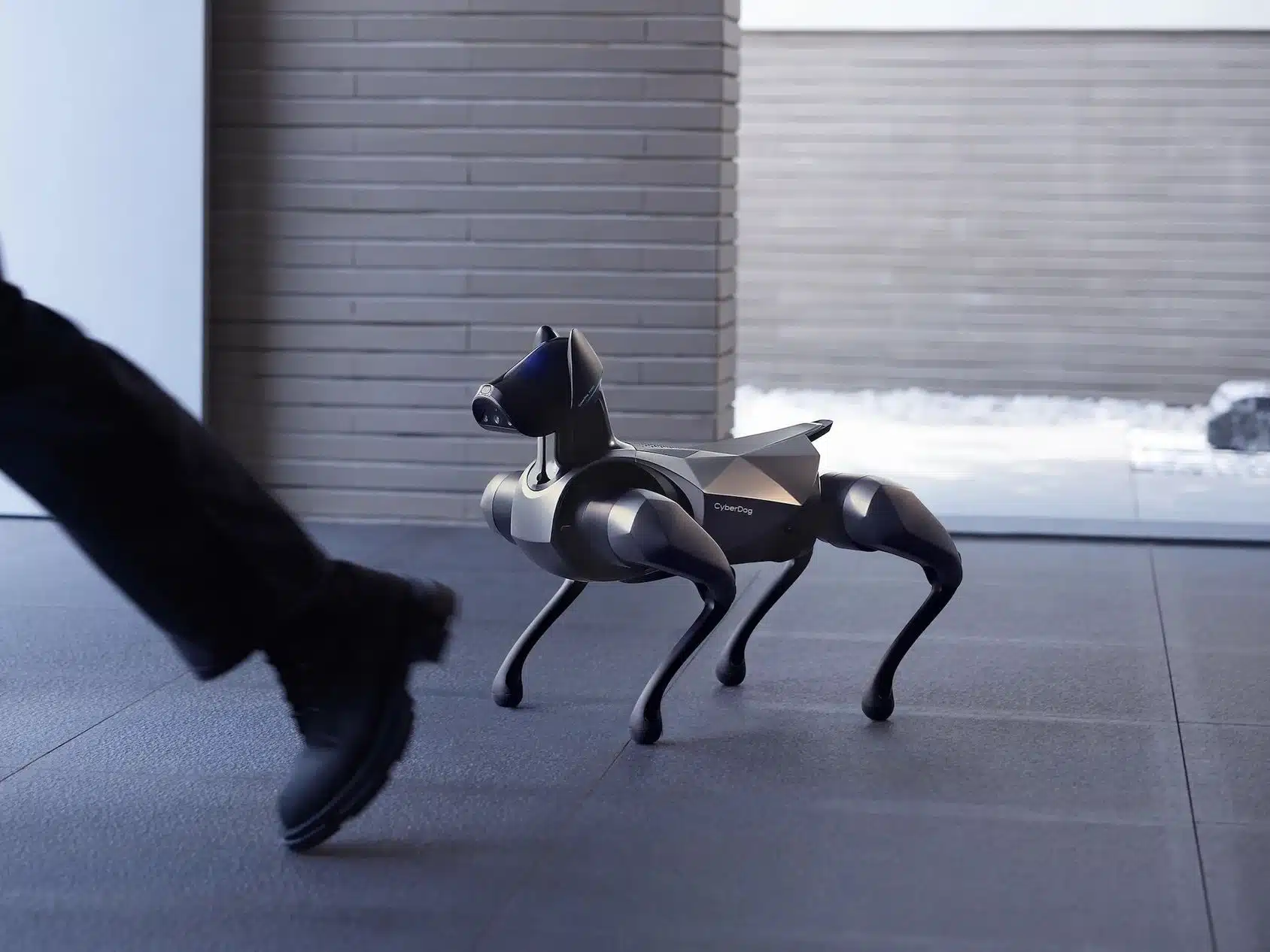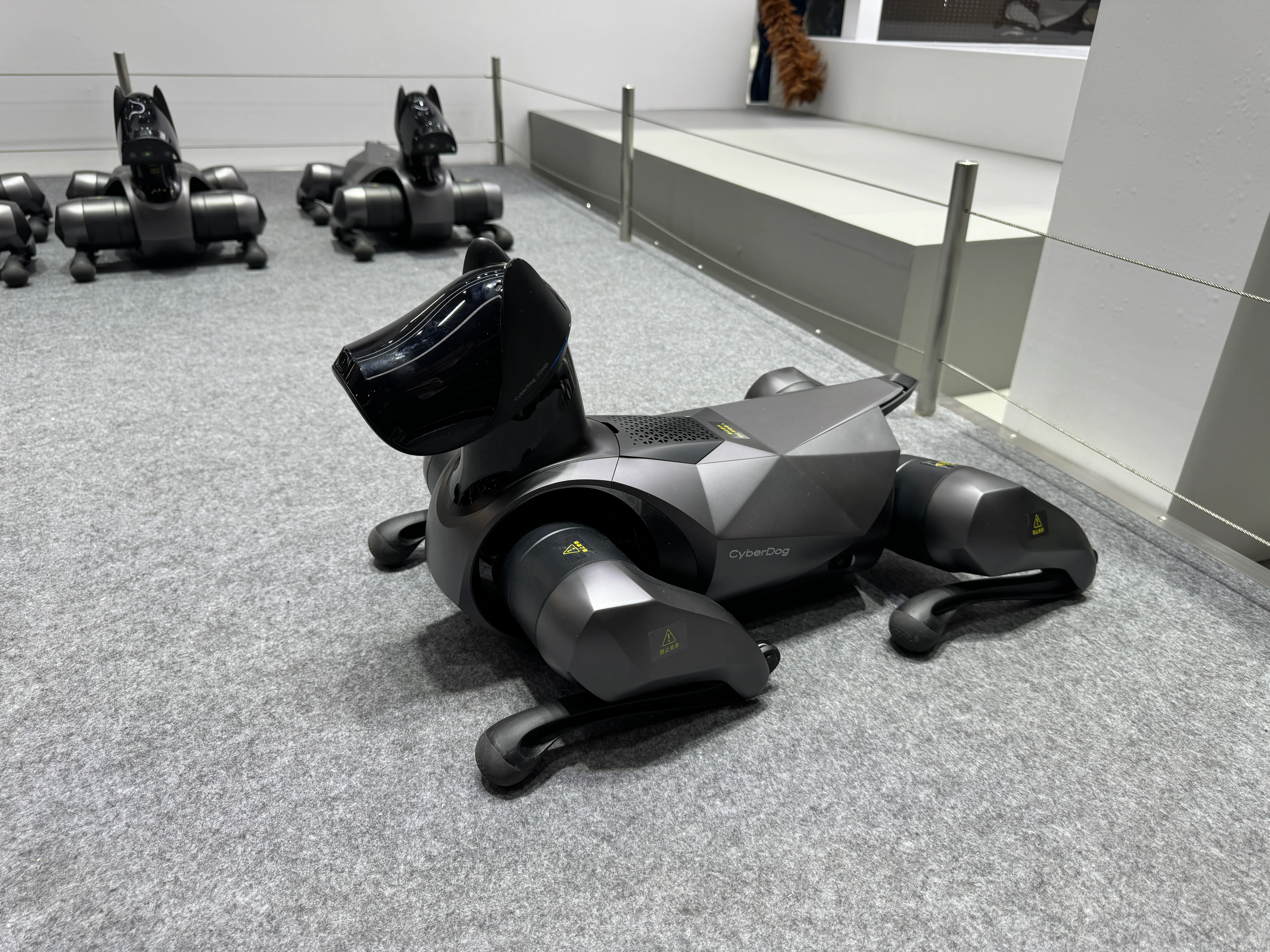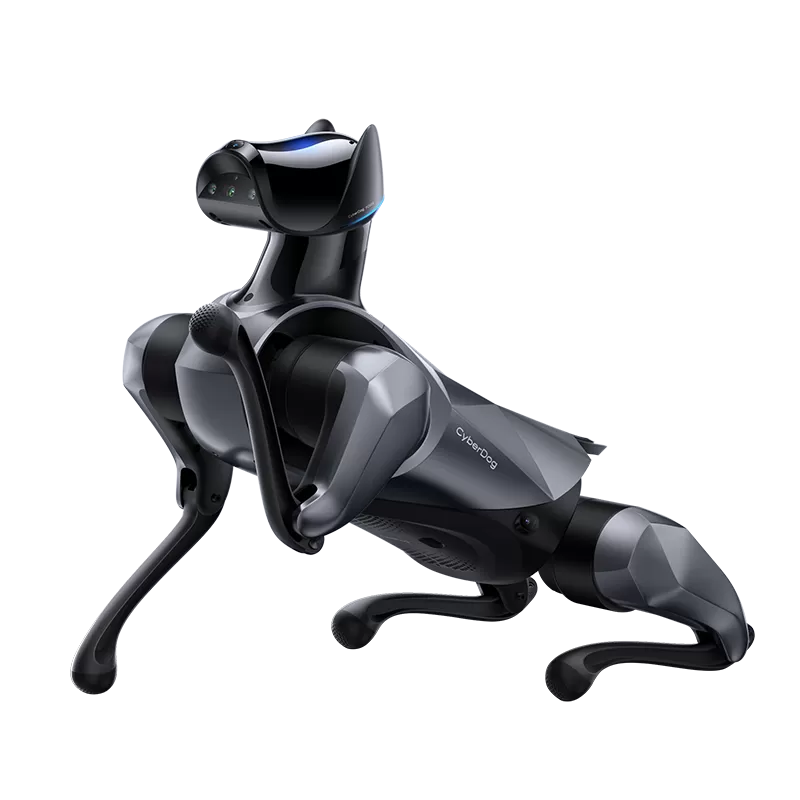Intro
The CyberDog measures 77.1 × 35.5 × 40 cm, weighing 14 kg. It is powered by an NVIDIA Carmel 6-core ARM CPU and Volta GPU with 48 Tensor Cores, running Ubuntu 18.04 and ROS 2. The robot employs 12 high-torque quasi-direct drive actuators (3 per leg) and features carbon fiber, aluminum, and ABS construction. Sensors include Intel RealSense D450 depth camera, 13MP AI interactive camera, binocular wide-angle camera, LiDAR, ToF sensor, IMU, GPS, and a microphone array. It can achieve speeds up to 3.2 m/s (11.5 km/h) and supports complex behaviors such as backflips and dancing. Battery life is approximately one hour, with about 160 minutes recharge time.

%5B1%5D.svg)





